International
Trump gains ground over Harris and the elections are emerging as the closest of the century

The Republican candidate for the White House, former President Donald Trump, has gained ground in the polls of his Democratic rival, Vice President Kamala Harris, and the selections of November 5 are emerging as the closest of the last century in the United States.
Harris’ candidacy, who replaced President Joe Biden after he threw in the towel in July, initially aroused great enthusiasm that was transferred to the polls, but Trump has managed to pulverize that advantage when there are 16 days left until the elections.
According to the latest forecast of the FiveThiryEight portal based on the average of polls published nationally and in key states, Trump achieves a slight advantage over Harris and has a 52% chance of winning the November 5 elections.
Despite the fact that the Democrat leads the intention to vote at the national level, the Republican is more favored by the Electoral College, the system by which the states grant a certain number of electoral votes to the winning candidate.
Two weeks ago, the forecast of the same portal gave Harris a 58% chance to defeat Trump.
The difference between Harris and Trump
Although the Republican has gained ground in recent weeks, the situation is so tight that the chances of victory of each of the two candidates are practically equivalent to throwing a coin into the air.
The difference between Harris and Trump is less than two percentage points in the seven decisive states (Arizona, Georgia, Michigan, Nevada, North Carolina, Pennsylvania and Wisconsin) so that a small statistical error could alter the result.
In addition, at the national level, the vice president only takes two points ahead of the former president, a narrower difference than the margin between Biden and Trump on any of the days of the 2020 campaign.
After those elections, the Republican refused to accept his defeat and promoted the vote count in some key states and several litigations that were dismissed in court.
In 2000, the election result was up in the air until the Supreme Court gave the victory to Republican George W. Busch on the Democrat Al Gore in Florida, which was then a hinge state.
But according to the FiveThirtyEight portal, to find elections as close as what the polls draw, we have to go back to 1876, when the Republican Rutherford Hayes beat the Democrat Samuel Tilden by a single electoral vote: 185 against 184.
Every vote counts
In such a tight scenario, every vote counts and the two candidates are doubling their presence in the seven decisive states, where in some cases the early vote has already begun with a high turnout.
The rhetoric and the crossfire between the two has also intensified with attacks and insults.
Trump suggested this week that he would be willing to deploy the military against the “internal enemies” of the United States, in an apparent reference to his political rivals, while Harris described his rival as “fascist” and “deranted.”
The vice president has decided to raise the tone against Trump in an attempt to revitalize her campaign, to which former presidents Barack Obama and Bill Clinton have also joined, and former first lady Michelle Obama to give her a new impetus.
The Republican is this Sunday in Pennsylvania, where he is expected to visit a McDonald’s and accuse Harris of having invented that he worked for that fast food chain as a young man.
For her part, the Democratic candidate, who turns 60 today, is in Georgia before traveling to Pennsylvania, where tomorrow she will campaign with Liz Cheney, a former Republican congressman facing Trump.
International
Gates Foundation to close by 2045 as Bill Gates pledges to donate $200 Billion

When Bill and Melinda French Gates established the Gates Foundation in 2000, they envisioned an organization that would continue its work for decades after their deaths. But now, Microsoft co-founder Bill Gates says he doesn’t want to wait that long to give away most of his fortune.
On Thursday, Gates announced that he plans to donate “virtually all” of his estimated $200 billion fortune over the next 20 years and will dissolve the foundation on December 31, 2045.
The announcement comes amid deep cuts by the Trump administration to funding for health, foreign aid, and public assistance programs — the very causes the Gates Foundation supports. The shift raises concerns about setbacks in global health research and critical development initiatives.
Gates says he wants to accelerate the foundation’s work in global health and equity, and hopes the move will inspire other billionaires to follow suit. In a blog post published Thursday morning, he emphasized that the foundation’s final phase should serve as a model for large-scale philanthropic impact.
This new pledge builds on Gates’s long-standing commitment to philanthropy. Alongside French Gates and Warren Buffett, he co-founded the Giving Pledge in 2010, which encourages billionaires to donate the majority of their wealth either during their lifetimes or in their wills. The campaign now has more than 240 signatories worldwide.
International
Bill Gates accuses Elon Musk of endangering the world’s poorest children

Bill Gates, co-founder of Microsoft turned global health philanthropist, sharply criticized Elon Musk in a recent interview with The New York Times, saying the tech billionaire is “the richest man in the world and is involved in the deaths of the world’s poorest children.”
At 69, Gates announced that the Bill & Melinda Gates Foundation will cease operations by 2045, and he urged the next generation of billionaires to step up. However, he expressed concern that today’s wealthy individuals are less committed to humanitarian work than they were two decades ago.
He cited Elon Musk as a prime example: “He’s the one who cut the USAID budget. He shredded it — all because he didn’t attend some party that weekend.”
Gates argued that Musk “could have been a great philanthropist,” but instead, “the richest man in the world is now contributing to the deaths of the world’s poorest children.” He pointed to how cuts to USAID have disrupted essential programs fighting HIV, malaria, and polio.
Gates called on the global elite to do more: “It’s not that we’re running out of rich people. There will be more, and they’ll reflect on what AI has done — or hasn’t — and what governments have done — or haven’t.”
Looking ahead, he urged future billionaires to commit to greater philanthropy, especially as his own foundation phases out: “The rich of today should do more. The rich twenty years from now should do more.”
Despite his criticisms, Gates maintained his trademark optimism. He dismissed fears that repeated U.S. administrations will continue cutting humanitarian budgets: “I don’t think there will be administration after administration slashing these things. If we look 20 years ahead, I believe we’ll continue reducing child mortality.”
Gates also expressed faith in artificial intelligence, suggesting it can provide medical expertise in remote regions on par with doctors with decades of experience — potentially even better than what’s available in wealthy countries.
International
VP JD Vance to World Cup visitors: “Enjoy the game, then go home”
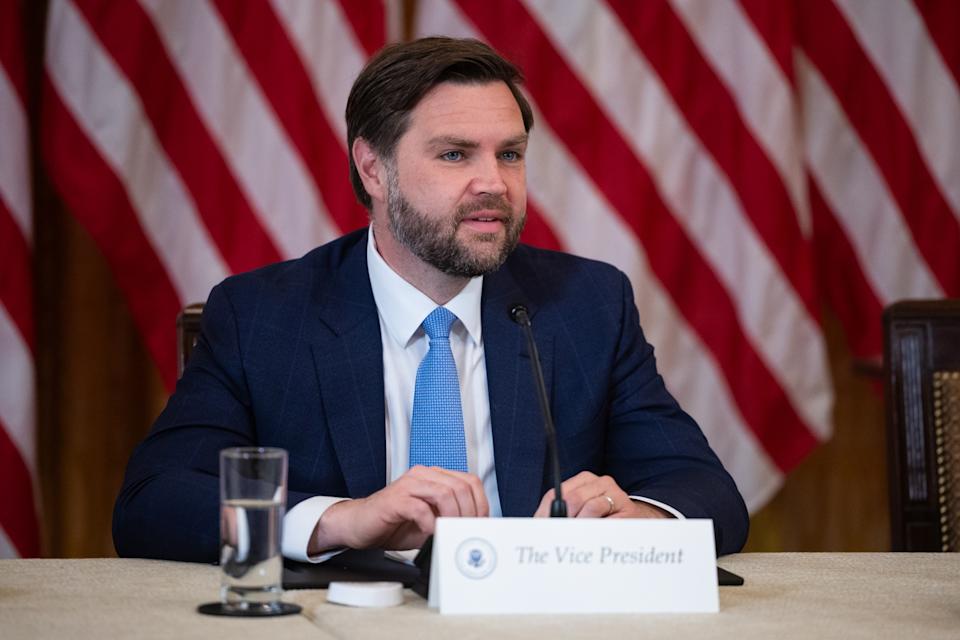
U.S. Vice President JD Vance issued a light-hearted but firm warning to international visitors planning to attend the 2026 FIFA World Cup, which will be co-hosted by the United States, Canada, and Mexico.
“We know we’ll have visitors, probably from close to a hundred countries. We want them to come. We want them to celebrate. We want them to enjoy the games,” said Vance during a press conference on Tuesday focused on the organization of upcoming major sporting events in the U.S.
“But when it’s over, they’ll have to go home,” he added.
Vance, speaking in a joking tone, also mentioned Homeland Security Secretary Kristi Noem, saying, “Otherwise, they’ll have to speak with Secretary Noem.”
The comment came during the first joint working session aimed at preparing for the 2026 World Cup, which will feature 48 national teams and take place across multiple cities in North America.
-

 International4 days ago
International4 days agoHouthis threaten israeli airports, urge airlines to cancel flights
-

 International4 days ago
International4 days agoAmerican Airlines sued after woman alleges sexual assault on flight
-
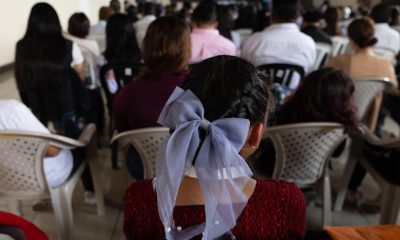
 Central America1 day ago
Central America1 day agoThousands of Guatemalan girls forced into motherhood due to sexual violence
-
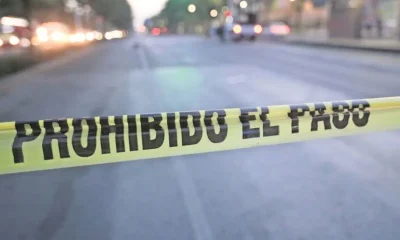
 International3 days ago
International3 days agoSinaloa Cartel faction leader ‘Chuy’ Guzmán Castro detained in Mexico amid rising violence
-
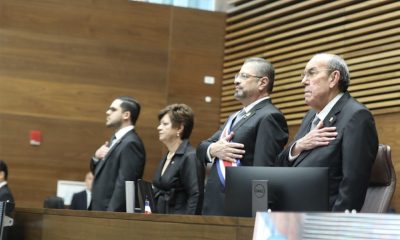
 Central America3 days ago
Central America3 days agoCosta Rica congressional leader warns of authoritarian drift under president Chaves
-

 International3 days ago
International3 days agoProsecutor José Domingo Pérez reinstated in Fujimori corruption case
-

 International3 days ago
International3 days agoSpain approves plan to reduce workweek to 37.5 hours
-

 International3 days ago
International3 days ago“Give me a break”: Trump defends AI image of himself as the Pope
-

 Sin categoría3 days ago
Sin categoría3 days agoPope Francis donated Popemobile transformed into mobile clinic for Gaza’s children
-

 International3 days ago
International3 days agoSheinbaum rejects U.S. military presence in Mexico’s war on drugs
-

 International3 days ago
International3 days agoSins of the Vatican: Scandals, abuse, and a cardinal’s fall from grace
-
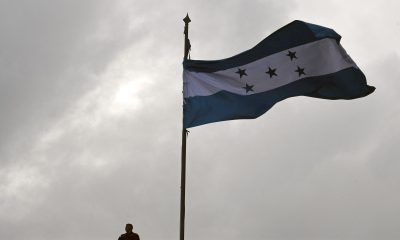
 Central America1 day ago
Central America1 day agoExperts urge action to protect democracy ahead of Honduras elections
-

 International1 day ago
International1 day agoLong wait at the Vatican: experts defend lengthy papal election process
-

 International1 day ago
International1 day agoXiomara Castro’s government vows to protect citizens amid threat reports
-
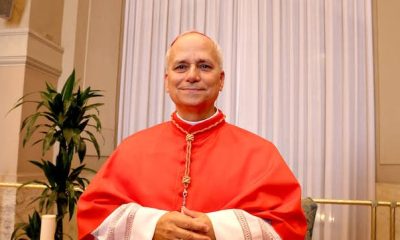
 Internacionales8 hours ago
Internacionales8 hours ago“A great honor for our country”: Trump congratulates Pope Leo XIV
-

 International8 hours ago
International8 hours agoBill Gates accuses Elon Musk of endangering the world’s poorest children
-

 International8 hours ago
International8 hours agoGates Foundation to close by 2045 as Bill Gates pledges to donate $200 Billion
-

 International8 hours ago
International8 hours agoVP JD Vance to World Cup visitors: “Enjoy the game, then go home”
-
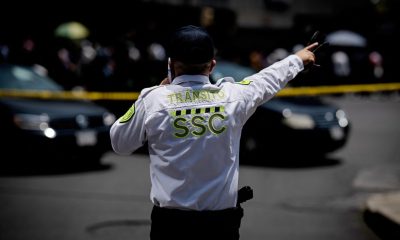
 International8 hours ago
International8 hours agoStrong winds cause stage collapse in Mexico City; seven hurt

















